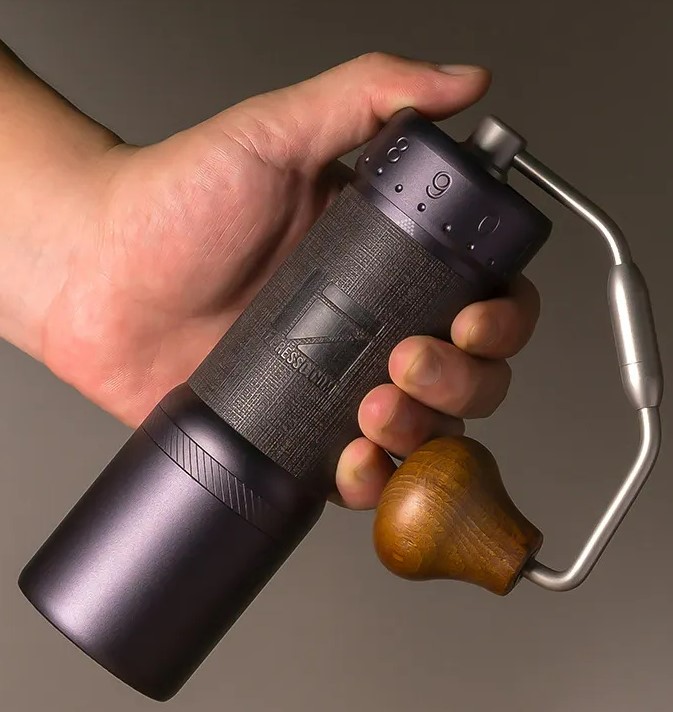Master the Art of Grinding Coffee Beans: A Guide to Coffee Grinders
For coffee lovers, the procedure of grinding coffee beans is more than simply a routine job; it is an art type that can significantly affect the taste and high quality of the final mixture. Recognizing the nuances of different grinder kinds, choosing the proper work size, and using the right strategies are essential actions towards accomplishing that excellent cup of coffee.
Types of Coffee Grinders
There are 3 main kinds of coffee grinders generally made use of by coffee lovers: blade mills, burr grinders, and hands-on mills. Blade mills are the a lot of standard type, making use of an easy blade to chop the coffee beans. While they are inexpensive and simple to make use of, they commonly result in uneven coffee premises due to inconsistent grinding.
Hands-on mills, as the name recommends, need manual initiative to grind the coffee beans. They are commonly liked by those who appreciate the process of hand developing coffee or for those who value portability. Hand-operated grinders can differ in style, from straightforward portable designs to much more complex counter top variations. While they might require more effort, manual mills supply control over the grinding procedure, allowing customers to readjust the work size to their preference. Each type of coffee mill has its advantages and perfect usage instances, providing to the varied preferences of coffee enthusiasts.

Selecting the Right Work Dimension
With an understanding of the different types of coffee grinders, the following important action in attaining the perfect mug of coffee is choosing the ideal grind dimension. The work size plays a substantial role in figuring out the flavor profile of your coffee (1Zpresso J-Ultra). Various developing techniques need particular grind sizes to optimize the removal of tastes from the coffee grounds
For a crude grind, suitable for French press and cold brew approaches, the coffee beans need to resemble breadcrumbs, offering a robust and vibrant taste. Medium-coarse grinds, suitable for Chemex or Clever Dripper, have a structure similar to coarse sand, providing a well balanced taste.
Medium grinds, frequently made use of in drip coffee manufacturers, have a consistency appearing like regular sand, leading to a well-shaped flavor. Fine grinds, finest for espresso machines, belong to common salt, producing an abundant and intense preference. Extra-fine grinds, utilized in Turkish coffee, are as fine as powdered sugar and generate a solid and potent mixture.
Grinding Strategies for Optimal Taste
To extract the maximum possibility of flavor from your coffee beans, understanding proper index grinding strategies is vital. Consistency is crucial when it comes to grinding coffee beans for optimum flavor. By paying focus to these grinding methods, you can elevate the taste account of your coffee and appreciate a much more rewarding mug every time.
Maintenance and Cleaning Up Tips

In enhancement to regular cleansing, it is crucial to examine your mill for any kind of indications of wear or damage. Check the blades, burrs, and various other elements for any kind of monotony or malfunctions. Replace any type of damaged parts without delay to maintain the top quality of your coffee grind. Finally, shop your mill in a dry and tidy setting to stop any dampness or dirt from impacting its performance. By complying with these upkeep and cleansing ideas, you can guarantee that your coffee mill proceeds to supply delicious newly ground coffee for many years ahead.
Troubleshooting Common Mill Issues


Guaranteeing your coffee mill functions efficiently requires skilled troubleshooting of usual concerns that may develop during its usage. One common issue with coffee grinders is irregular grind size. This concern can happen because of boring blades, inappropriate calibration, or irregular coffee beans. To address this, ensure your mill's blades are read the article sharp and properly aligned, adjust the grinder according to the preferred work dimension, and tremble the grinder gently while in operation to aid achieve a more uniform work.
One you can find out more more frequent problem is grinder obstructing. This can occur when oils from the coffee beans accumulate and block the grinder's chute. To settle this, take apart the mill and tidy all parts completely, paying unique attention to the chute and burrs. In addition, bear in mind overfilling the receptacle to avoid obstructions.
Lastly, if your grinder is generating too much noise throughout procedure, it can indicate an issue with the motor or inner parts. In such cases, it is advisable to consult the manufacturer's instructions for repairing steps or look for expert aid to diagnose and correct the issue quickly.
Verdict
To conclude, understanding the art of grinding coffee beans involves recognizing the different types of coffee grinders, picking the ideal work size, utilizing proper grinding methods for optimal taste, and keeping and cleaning up the mill routinely. By complying with these guidelines and fixing typical mill problems, coffee fanatics can raise their coffee brewing experience and appreciate a tasty cup of coffee whenever.